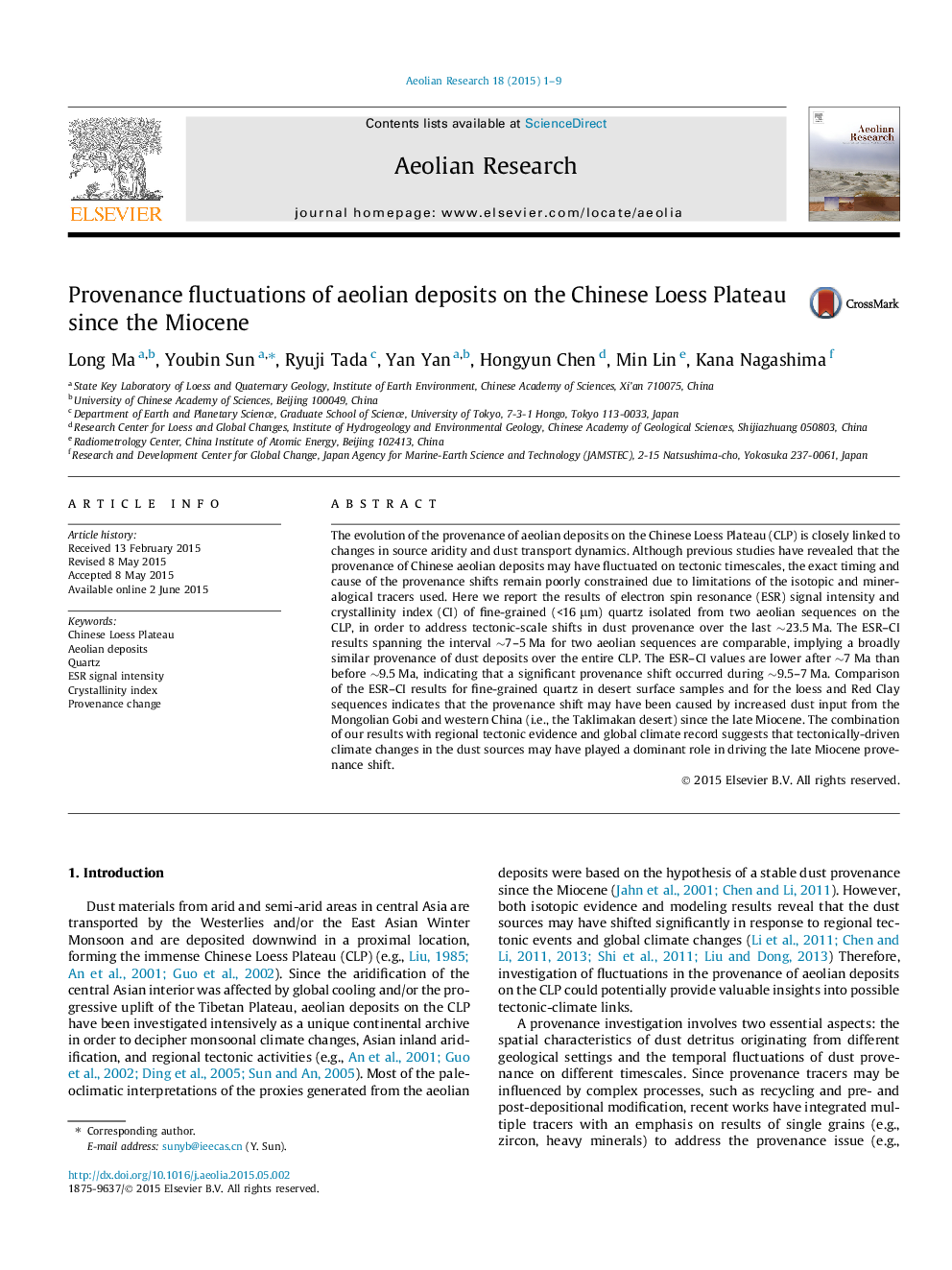| Article ID | Journal | Published Year | Pages | File Type |
|---|---|---|---|---|
| 6426390 | Aeolian Research | 2015 | 9 Pages |
â¢ESR-CI results reveal a remarkable provenance shift of dust provenance around 9.5-7 Ma.â¢Late Miocene provenance shift was related to changes in source aridity and wind systems.â¢Tectonic-climate interplay played a key role in driving late Miocene dust provenance shift.
The evolution of the provenance of aeolian deposits on the Chinese Loess Plateau (CLP) is closely linked to changes in source aridity and dust transport dynamics. Although previous studies have revealed that the provenance of Chinese aeolian deposits may have fluctuated on tectonic timescales, the exact timing and cause of the provenance shifts remain poorly constrained due to limitations of the isotopic and mineralogical tracers used. Here we report the results of electron spin resonance (ESR) signal intensity and crystallinity index (CI) of fine-grained (<16 μm) quartz isolated from two aeolian sequences on the CLP, in order to address tectonic-scale shifts in dust provenance over the last â¼23.5 Ma. The ESR-CI results spanning the interval â¼7-5 Ma for two aeolian sequences are comparable, implying a broadly similar provenance of dust deposits over the entire CLP. The ESR-CI values are lower after â¼7 Ma than before â¼9.5 Ma, indicating that a significant provenance shift occurred during â¼9.5-7 Ma. Comparison of the ESR-CI results for fine-grained quartz in desert surface samples and for the loess and Red Clay sequences indicates that the provenance shift may have been caused by increased dust input from the Mongolian Gobi and western China (i.e., the Taklimakan desert) since the late Miocene. The combination of our results with regional tectonic evidence and global climate record suggests that tectonically-driven climate changes in the dust sources may have played a dominant role in driving the late Miocene provenance shift.
